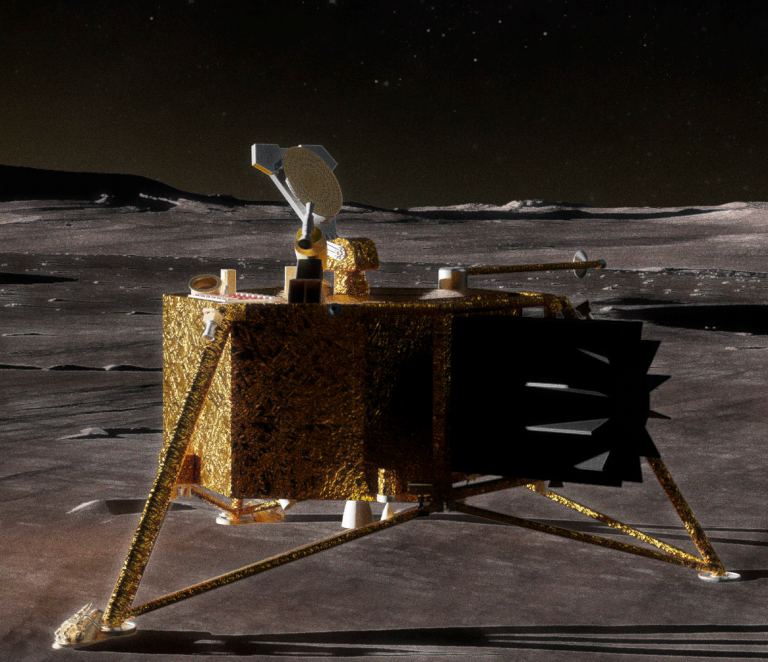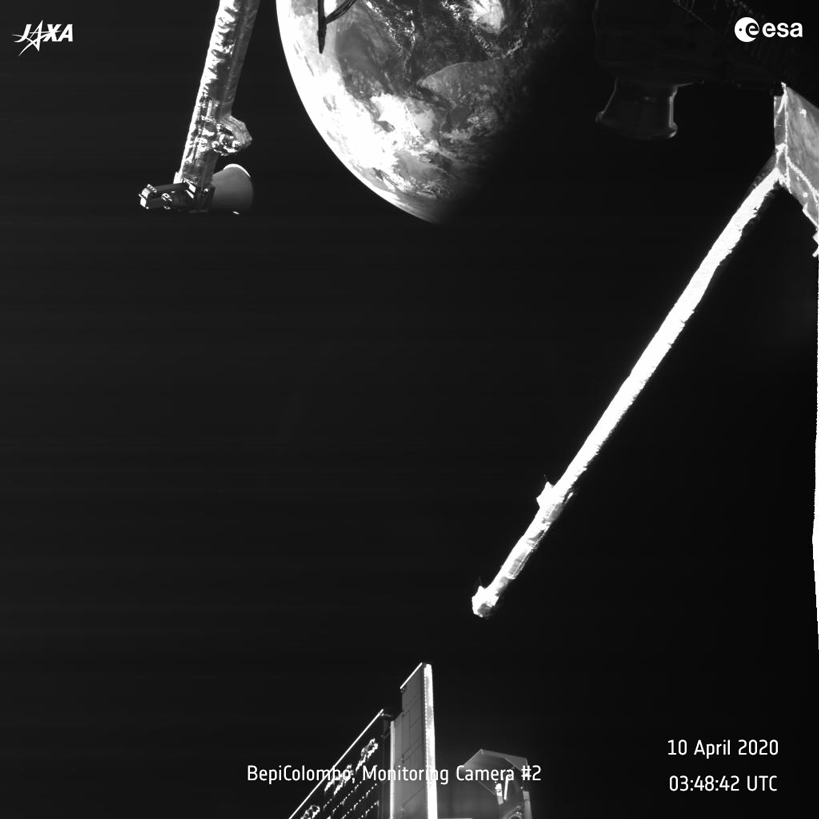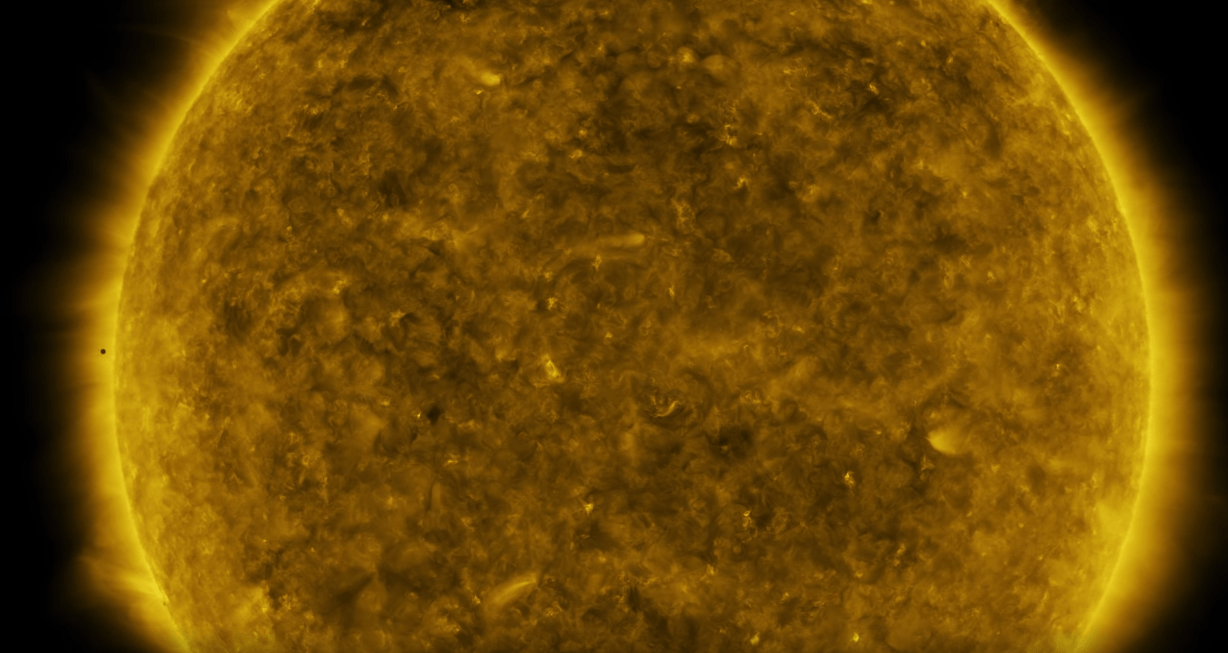So much in the astronomy community revolves around the decadal survey. Teams of dozens of scientists put hundreds of hours developing proposals that eventually try to impact the recommendations of the survey panel that influence billions of dollars in research funding over the following decade. And right now is the prime time to get those proposals in. One of the most ambitious is sponsored by a team led by researchers at John Hopkins University Applied Physics Laboratory (APL). Their suggestion – it’s time to land on Mercury.
Continue reading “It’s Time to Send a Lander to Mercury”Who was Giuseppe ‘Bepi’ Colombo and why Does he Have a Spacecraft Named After him?
Astronomers have an excellent habit of naming large projects after deserving contributors to their field. From Nancy Grace Roman to Edwin Hubble, some of the biggest missions are named after space exploration pioneers. When ESA and JAXA sat down to figure out a name for their new Mercury probe, they would have come across an important name early in their research – Giuseppe “Bepi” Colombo – the man who helped plan the Mariner 10 Mercury mission.
Continue reading “Who was Giuseppe ‘Bepi’ Colombo and why Does he Have a Spacecraft Named After him?”The First Images and Videos from the Double Venus Flyby

Two spacecraft made historic flybys of Venus last week, and both sent back sci-fi-type views of the mysterious, cloud-shrouded planet.
The Solar Orbiter and BepiColombo spacecraft both used Venus for gravity assists within 33 hours of each other, capturing unique imagery and data during their encounters.
Continue reading “The First Images and Videos from the Double Venus Flyby”MESSENGER Saw a Meteoroid Strike Mercury
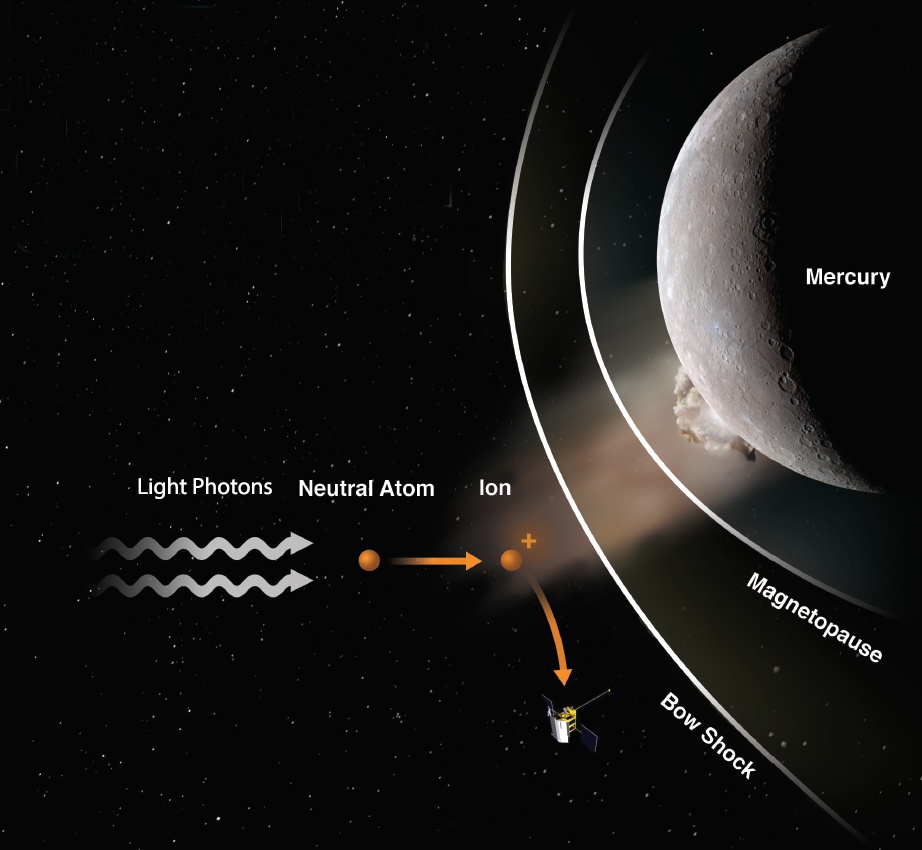
Telescopes have captured meteoroids hitting the Moon and several spacecraft imaged Comet Shoemaker–Levy 9 smacking into Jupiter in 1994. But impacts as they happen on another rocky world have never been observed.
However, the MESSENGER (MErcury Surface, Space ENvironment, GEochemistry and Ranging) mission may have seen an impact take place back in 2013. In looking at archival data from the mission, scientists found evidence of a meteoroid impact on Mercury. While this data isn’t a ‘no-doubt’ photo of the event, it does tell scientists more about impacts and how they affect Mercury’s wispy-thin atmosphere.
Continue reading “MESSENGER Saw a Meteoroid Strike Mercury”BepiColombo captured images of Earth during its recent flyby
Farewell! Even though the BepiColombo mission launched for Mercury in 2018, it’s still hanging around the Earth – at least, briefly, as shown in this stunning image recently released by the European Space Agency.
In the image, the Earth hangs serenely in between BepiColumbo’s magnetometer boom (on the right) and its medium-gain antenna (on the left).
But the Earth flyby wasn’t without its tense moments. The spacecraft relies on solar power, and during the loop around Earth it had to spend some time in our planet’s shadow – and out of the sun. To prepare, the mission scientists made sure that BepiColombo was fully charged and nice and warm before the maneuver.
And on April 10, the date of the flyby, it all went swimmingly.
The spacecraft is on a long, winding journey sunwards towards the smallest planet in the solar system, making loop after loop first around Earth, then Venus a couple times, then Mercury itself half a dozen times before parking itself in orbit. The frequent loops are necessary because at launch BepiColombo was traveling at the same speed as the Earth in its orbit (29.78 km/s), and needs to match that of Mercury (47.36 km/s), and it does so by borrowing some energy from the planets themselves.
Once BepiColombo reaches Mercury, it will separate into two individual probes: the Mercury Planetary Orbiter and the Mercury Magnetospheric Orbiter. The twin orbiters will attempt to answer several challenging riddles about the planet nearest to the sun, like the origins of Mercury’s faint-but-still-there magnetic field and atmosphere, and the craters pitting its surface.
But it will take a long time to get there. BepiColombo’s final arrival at Mercury isn’t scheduled until December of 2025, showing how reaching the inner planets of our system can be sometimes more difficult than journeys outward – it turns out that doing planetary dances is more challenging than you might think.
The Intense Heat from the Sun Helps Ice Form on Mercury. Wait… What?

While the scorching planet Mercury might not be the first place you’d think to look for ice, the MESSENGER mission confirmed in 2012 that the planet closest to the Sun does indeed hold water ice in the permanently-shadowed craters around its poles. But now a new study regarding Mercury’s ice provides even more counter-intuitive details about how this ice is formed. Scientists say heat likely helps create some of the ice.
Continue reading “The Intense Heat from the Sun Helps Ice Form on Mercury. Wait… What?”Satellites Watched Mercury’s Transit From Space, Confirming That Yes, the Sun Has At Least One Planet
Do you wonder how astronomers find all those exoplanets orbiting stars in distant solar systems?
Mostly they use the transit method. When a planet travels in between its star and an observer, the light from the star dims. That’s called a transit. If astronomers watch a planet transit its star a few times, they can confirm its orbital period. They can also start to understand other things about the planet, like its mass and density.
The planet Mercury just transited the Sun, giving us all an up close look at transits.
Continue reading “Satellites Watched Mercury’s Transit From Space, Confirming That Yes, the Sun Has At Least One Planet”Mercury has Magnetic Poles that Drift Like Earth’s

Earth’s magnetic poles drift over time. This is something that every airplane pilot or navigator knows. They have to account for it when they plan their flights.
They drift so much, in fact, that the magnetic poles are in different locations than the geographic poles, or the axis of Earth’s rotation. Today, Earth’s magnetic north pole is 965 kilometres (600 mi) away from its geographic pole. Now a new study says the same pole drifting is occurring on Mercury too.
Continue reading “Mercury has Magnetic Poles that Drift Like Earth’s”There May be Thick Ice Deposits on the Moon and Mercury
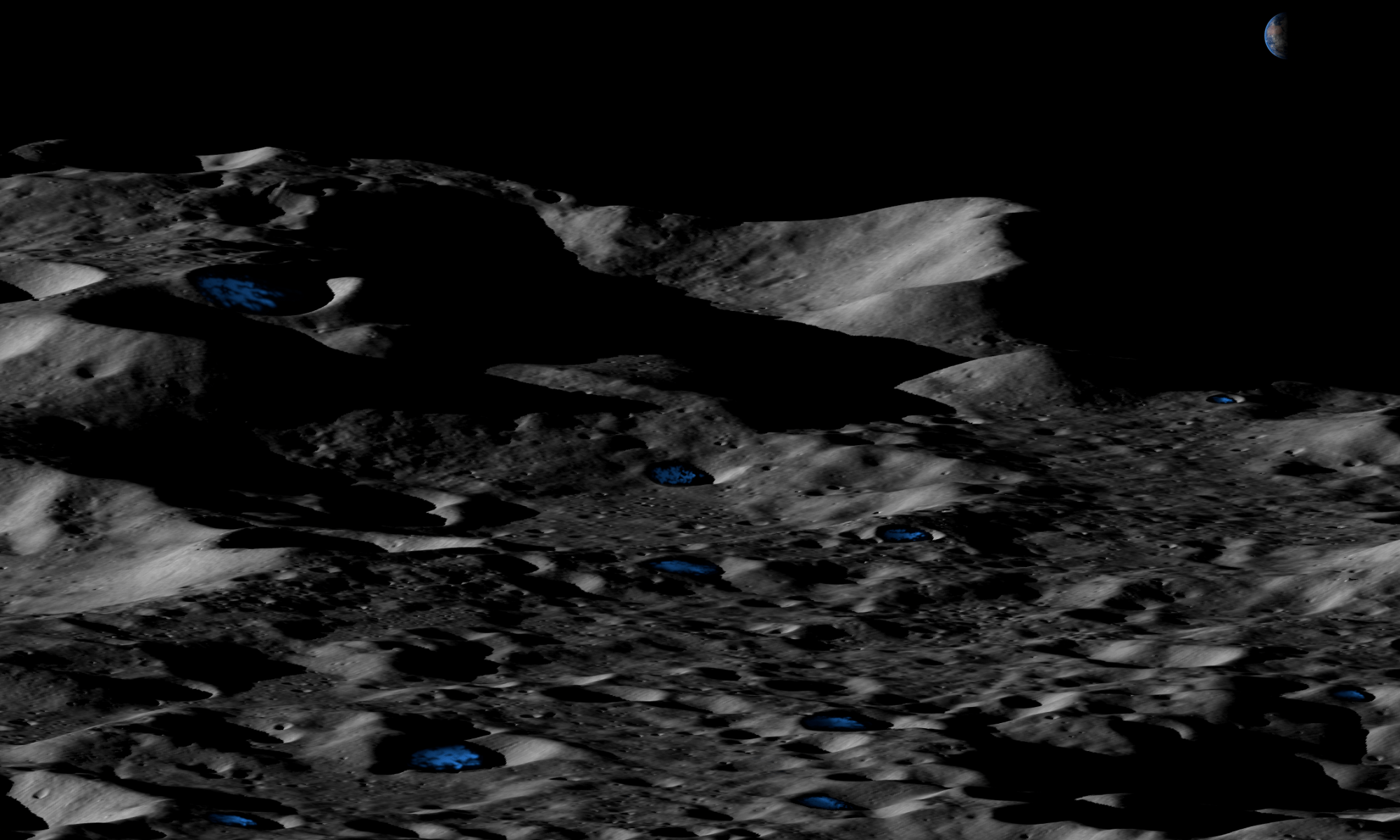
In addition to being the only solvent that is capable of supporting life, water is essential to life as we know it here on Earth. Because of this, finding deposits of water – whether in liquid form or as ice – on other planets is always exciting. Even where is not seen as a potential indication of life, the presence of water offers opportunities for exploration, scientific study, and even the creation of human outposts.
This has certainly been the case as far as the Moon and Mercury are concerned, where water ice was discovered in the permanently-shadowed cratered regions around the poles. But according to a new analysis of the data from the Lunar Reconnaissance Orbiter and the MESSENGER spacecraft, the Moon and Mercury may have significantly more water ice than previously thought.
Continue reading “There May be Thick Ice Deposits on the Moon and Mercury”Mercury-Bound BepiColombo is About to Start Using the Most Powerful Ion Engines Ever Sent to Space
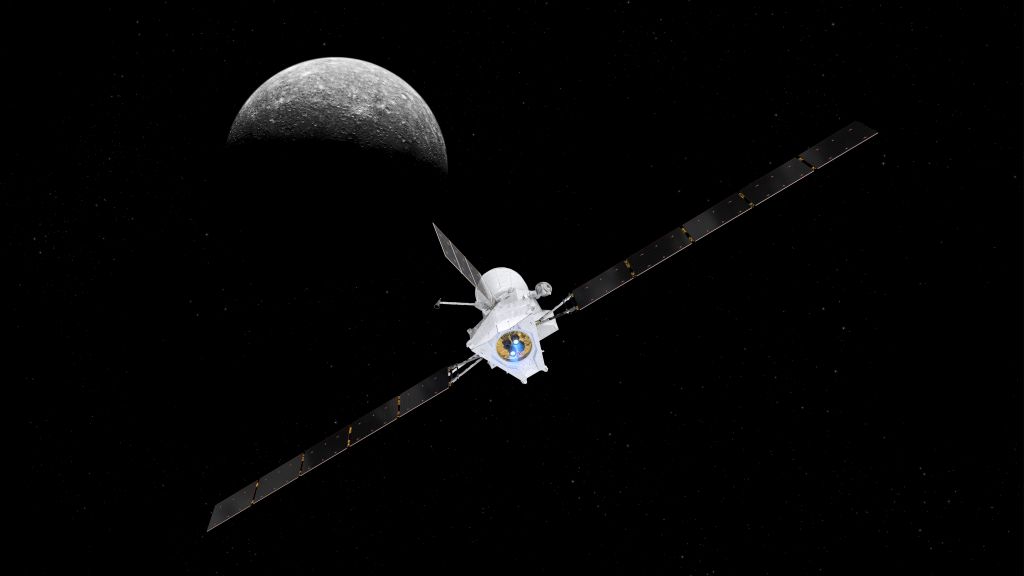
A handful of spacecraft have used ion engines to reach their destinations, but none have been as powerful as the engines on the BepiColombo spacecraft. BepiColombo is a joint mission between the European Space Agency (ESA) and the Japan Aerospace Exploration Agency (JAXA.) It was launched on October 20, 2018, and has gone through weeks of in-flight commissioning. On Sunday it turned on its powerful ion thrusters for the first time.
“We put our trust in the thrusters and they have not let us down.” – Günther Hasinger, ESA Director of Science.
BepiColombo is a three-part spacecraft. It has two orbiters, the Mercury Planet Orbiter (MPO) built by the ESA, and the Mercury Magnetospheric Orbiter (MMO) built by JAXA. The third part is the Mercury Transfer Module (MTM), built by ESA. The MTM is the propulsion part of the spacecraft and contains the spacecraft’s four ion engines.

